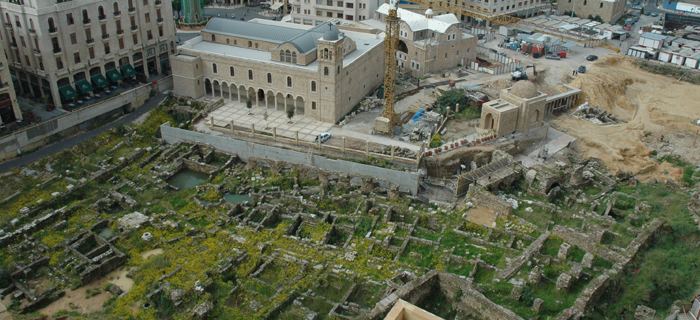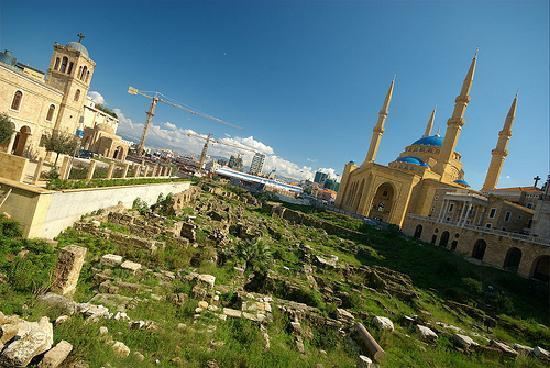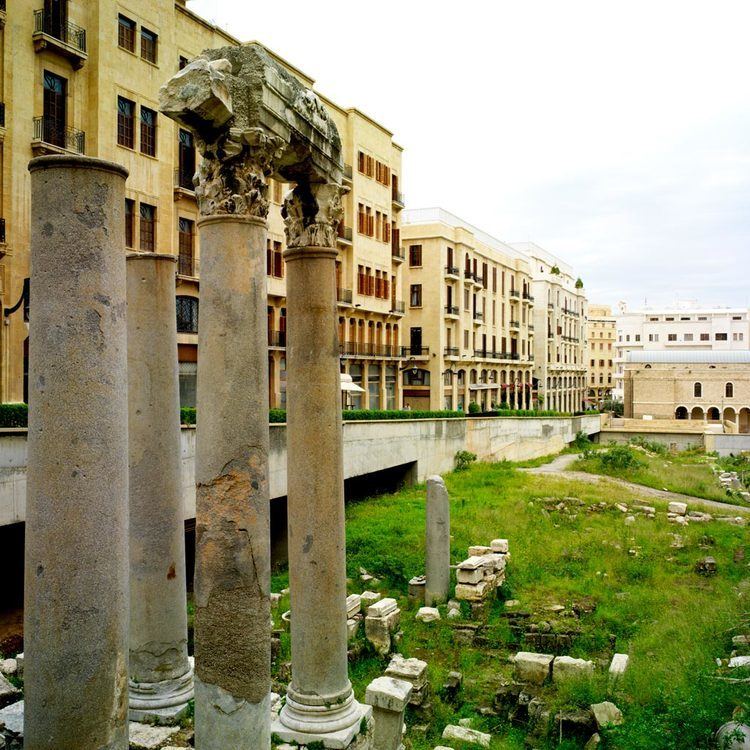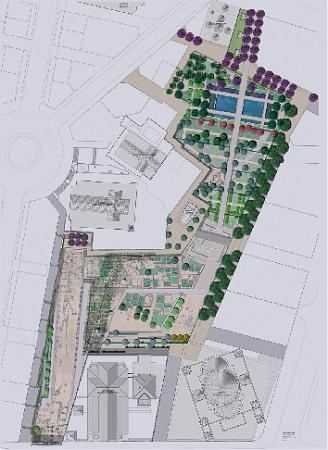 | ||
Garden of forgiveness
The Garden of Forgiveness, (also known as Hadiqat As-Samah in Arabic), lies close to Martyrs’ Square and the wartime Green Line. It is surrounded by places of worship belonging to different denominations, and reveals many layers of Beirut’s past.
Contents
- Garden of forgiveness
- Garden of forgiveness to heal wounds of war
- Construction
- History
- Timeline
- References

Garden of forgiveness to heal wounds of war
Construction

Surrounded by a number of churches and mosques, Garden of Forgiveness lies close to Martyrs’ Square and the wartime Green Line. The area was classified as non aedificandi, not to be built, in the Master Plan of the Beirut City Center. In 1998, the winning design of the garden by Gustafson-Porter brought together different aspects of Lebanon’s ancient heritage and rich landscapes, thus emphasizing national unity.
History

The Garden of Forgiveness lies close to Martyrs’ Square and the wartime Green Line (1975-1990). It is surrounded by places of worship belonging to different denominations, and reveals many layers of Beirut’s past. The area was classified as non aedificandi, not to be built, in the Master Plan of the Beirut City Center. The Garden of Forgiveness is envisioned as a place of calm and reflection, of understanding and tolerance. In 1998, the winning design of Gustafson Porter brought together different aspects of Lebanon’s ancient heritage and rich landscapes, thus emphasizing national unity. Entering through an enclosed water garden, the visitor descends into layers from the city’s past, crossing terraces of olive and fruit trees. The two main streets of Roman Berytus, the Cardo and Decumanus Maximus, were discovered here. Their shaded colonnades became busy markets on festival days. At other times, the streets would have been frequented by Law School students and citizens passing to the Forum or visiting temples and churches. During excavations, a sacred platform dating from Phoenico-Persian times was found below the crossing of the Cardo and Decumanus Maximus. The Mamluk-Ottoman layers of this district revealed the sites of various religious cults within a network of narrow alleys. In the late 19th century, straight shopping streets replaced the alleys, while the sites of religious worship were enlarged and became prestigious monuments. Embedded in the fabric of Souk al-Nouriyyeh, the Sayyidat al-Nouriyyeh chapel, once a place of worship attended by Lebanese citizens from various confessions, did not survive the Lebanese Civil War. It has been rebuilt as a stand-alone chapel on its original site, now overlooking the Garden of Forgiveness.
Timeline

1990s: Following post-war excavations, area was classified as non aedificandi- not to be built, in the Master Plan of Beirut's City Center.

1998: Gustafson-Porter's winning design of the Garden of Forgiveness brought together different aspects of Lebanon's ancient heritage and rich landscapes, while emphasizing national unity.

